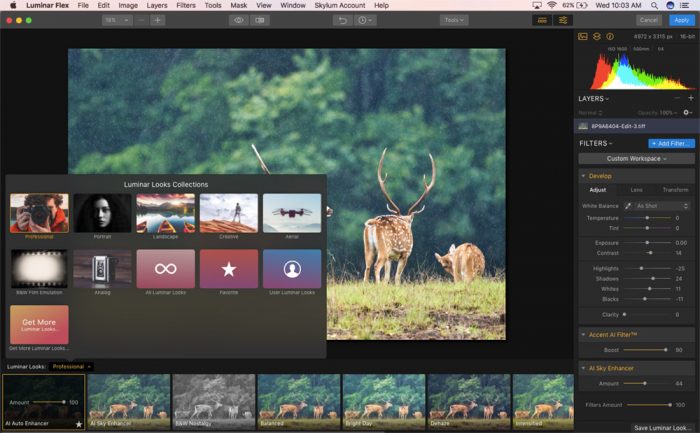

Luminar flex will load and you can now make any adjustments that you want. DOWNLOAD LUMINAR FLEX SOFTWARE
Select the new layer, and from the menu choose Filter > Skylum Software > Luminar Flex. This will allow you to fade whatever effect you apply in Luminar. The reason we’re creating a duplicate layer is so you can control the opacity of the filtered layer. The reason you choose this method to duplicate, rather than just pressing command + j is that this method creates an independent smart object, where as command + j or the regular duplicate layer will just make a clone of it. To do this right click on the layer and choose New smart object via copy. This means that if you are working with a RAW file, all of it’s edibility will remain intact, and you can edit the RAW parameters in Photoshop’s Camera RAW filter by double clicking on the icon in Photoshop. This will send the linage to Photoshop as a smart object. From the pop-up menu choose: Edit In > Open as Smart Object in Photoshop In Lightroom, select the image you want to edit and right click on it. Here’s what I do if I want to send an image to Luminar via Photoshop You can apply the stand alone version as a smart object, but it doesn’t retain the settings if you then re-edit the smart filter. This doesn’t work in the stand alone version of Luminar. Because Luminar Flex supports Photoshop’s smart objects properly, if you apply it as a filter to a smart layer - you can go back in and re-edit your settings at any time in Photoshop. 
This is one of the advantages of Luminar Flex over the standard version of Luminar, when used as a plug-in. If you send the picture to Photoshop first, and you send it as a smart object, you can maintain not only the edibility of your Luminar edits, but also the camera raw edits. More importantly though, you loose the ability to re-edit your image. If you launch Luminar Flex directly from Lightroom, you will save a step, and it is certainly a little less work, but doing this loses you a degree of flexibility. Why use photoshop? Why not just launch it directly?

In this post I’ll explain why, and what the steps are that you should use if you want to work this way too. However, personally I use a bit of a roundabout method, by sending the image to Photoshop first. If you are using Luminar flex as a plug-in for Lightroom, then there are lots of different ways to activate it.







 0 kommentar(er)
0 kommentar(er)
